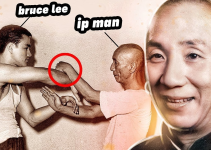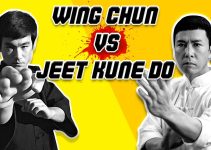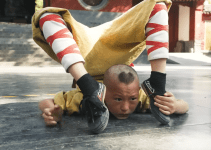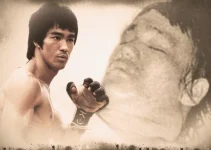Wing Chun, a martial art characterized by its efficiency, directness, and economy of movement, has a rich and storied history. At the heart of this history is the legendary figure of Ng Mui, a Buddhist nun whose life and contributions to martial arts are steeped in both fact and myth. This blog explores the origins of Wing Chun, the life of Ng Mui, and how she came to create this influential martial art.
The Historical Context
The story of Ng Mui and the founding of Wing Chun is set against the backdrop of the Qing Dynasty in China, specifically during the late 17th and early 18th centuries. This was a time of great turmoil and transition, with the Manchu rulers of the Qing Dynasty consolidating their power over China. The legendary Shaolin Temple, a renowned center of martial arts training and Buddhist learning, plays a pivotal role in this tale.
Who Was Ng Mui?
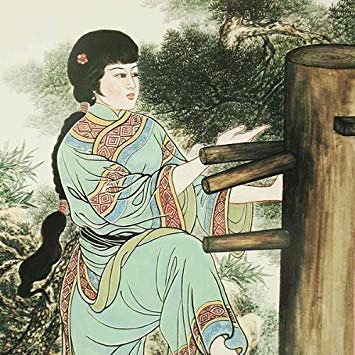
Ng Mui is one of the legendary Five Elders of Shaolin, a group of martial arts masters who survived the destruction of the Shaolin Temple by Qing forces. According to legend, Ng Mui was a highly skilled martial artist and a Buddhist nun. Her life at the Shaolin Temple provided her with extensive knowledge and mastery of various martial arts techniques.
The Escape from Shaolin
As the story goes, the Shaolin Temple was targeted by the Qing government because it was seen as a breeding ground for rebels and insurgents. The temple was ultimately destroyed, but Ng Mui and a few other masters managed to escape. She fled to the Daliang Mountains, where she found refuge in the White Crane Temple. It was here, in the serene environment of the mountains, that Ng Mui began to refine her martial arts knowledge.
The Inspiration Behind Wing Chun
While living in the White Crane Temple, Ng Mui witnessed a fight between a snake and a crane. She was deeply impressed by the crane’s ability to defend itself and counterattack with minimal effort and maximum effectiveness. This observation inspired her to develop a new martial art that emphasized efficiency, simplicity, and directness—qualities that were embodied in the movements of the crane and the snake.
The Creation of Wing Chun
Ng Mui’s new martial art was a departure from the more traditional styles she had learned at Shaolin. Instead of relying on brute strength, it focused on technique, speed, and precision. The art was designed to be effective for individuals of smaller stature and less physical strength, making it accessible to a wider range of practitioners.
Key Principles of Wing Chun
- Centerline Theory: Wing Chun emphasizes the protection and control of the centerline, the imaginary line running down the middle of the body. Attacks and defenses are executed along this line to maximize efficiency and minimize openings for the opponent.
- Simplicity and Directness: The techniques in Wing Chun are straightforward and designed to be executed quickly. There are no unnecessary movements; every action has a purpose.
- Economy of Movement: Wing Chun practitioners learn to conserve energy by using the shortest and most efficient path to achieve their objective. This principle allows for rapid and continuous attacks.
- Chi Sao (Sticky Hands): A unique training exercise in Wing Chun, Chi Sao develops sensitivity, reflexes, and the ability to react to an opponent’s movements through touch rather than sight.
The Legend of Yim Wing Chun
One of the most enduring legends surrounding the creation of Wing Chun involves a young woman named Yim Wing Chun. According to the story, Yim Wing Chun was a beautiful and skilled martial artist who caught the eye of a local warlord. When she refused his advances, the warlord challenged her to a fight, promising to leave her alone if she could defeat him.
Ng Mui, having befriended Yim Wing Chun, taught her the new martial art she had developed. Using these techniques, Yim Wing Chun was able to defeat the warlord, and the martial art was subsequently named after her. While the historical accuracy of this tale is debated, it highlights the inclusive and empowering nature of Wing Chun.
The Spread of Wing Chun
After Ng Mui and Yim Wing Chun, the art continued to be passed down through generations of practitioners. Each master contributed to the development and refinement of the style. Some of the most notable figures in the history of Wing Chun include Leung Bok Chau, Wong Wah Bo, Leung Jan, and Ip Man.
Ip Man and the Modern Era
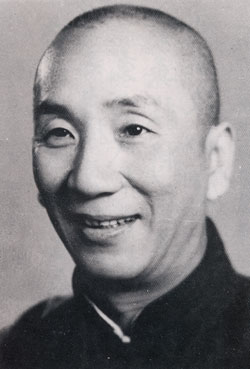
Ip Man, perhaps the most famous Wing Chun master of the 20th century, played a crucial role in popularizing the art both in China and internationally. He taught many students, including Bruce Lee, who would go on to become a martial arts icon in his own right. Through Ip Man’s teachings and the success of his students, Wing Chun gained widespread recognition and respect as an effective martial art.
The Legacy of Ng Mui
Ng Mui’s contributions to martial arts extend beyond the creation of Wing Chun. She is also credited with influencing other martial arts styles, such as White Crane and Five-Pattern Hung Kuen. Her legacy is a testament to the enduring power of innovation and adaptation in the face of adversity.
Wing Chun in Popular Culture
In recent years, Wing Chun has been popularized through movies, television shows, and documentaries. The Ip Man film series, starring Donnie Yen, brought international attention to the art and its history. These films depict the life of Ip Man and his journey as a Wing Chun master, highlighting the art’s philosophy and techniques.
The story of Ng Mui and the founding of Wing Chun is a captivating blend of history and legend. It underscores the importance of adaptability, innovation, and perseverance in martial arts. Through her experiences and observations, Ng Mui was able to create a martial art that has stood the test of time and continues to inspire practitioners around the world. As we practice and study Wing Chun today, we honor the legacy of Ng Mui and the countless masters who have contributed to its development.
